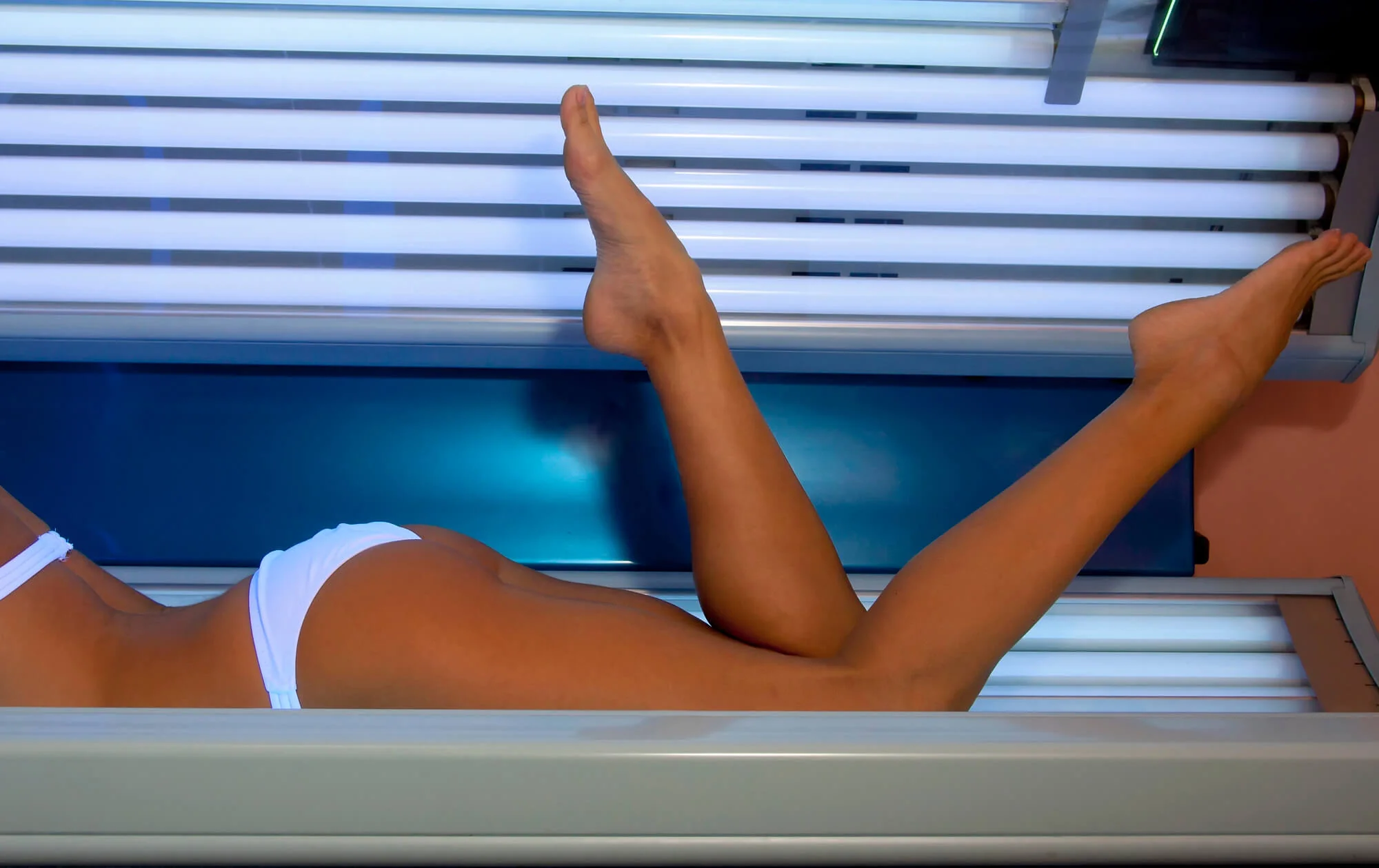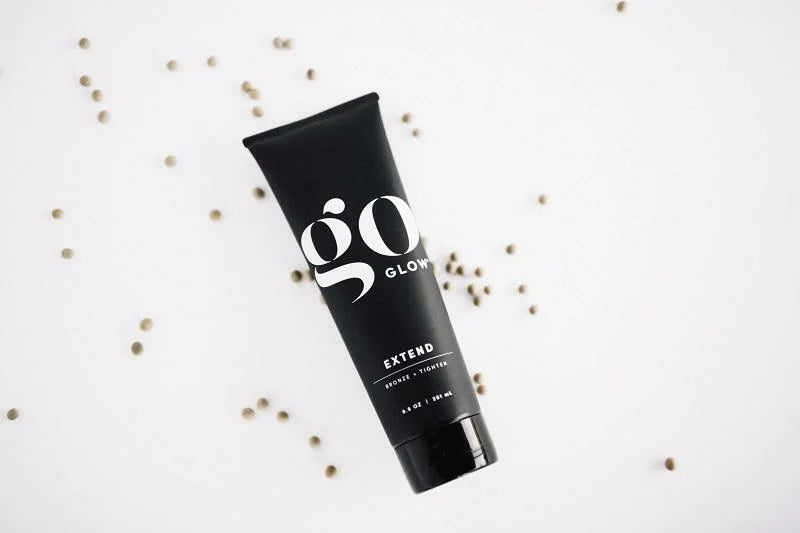The pursuit of a radiant, sun-kissed glow has long been a beauty standard. Whether for special occasions, beach vacations, or simply day-to-day confidence, tanning is one of the most popular methods people use to enhance their appearance. But with so many tanning options available, from indoor tanning beds to advanced sunless tanning products, making the right choice can feel overwhelming.
In this guide, we break down the core differences between the top two most popular methods of tanning: beds and sunless tanning, analyzing their safety, effectiveness, and impact on skin health. From UV radiation risks to the science of skin tone customization, you’ll get the facts and discover why more people are making the switch to safer, smarter solutions like professional spray tanning.
Why We Tan: The Psychology of the Glow
Across generations, a golden glow has been associated with vitality, wellness, and a touch of luxury. It conveys that someone has been active, outdoors, or just returned from a beautiful beach. In Western beauty culture, the appearance of tanned skin often signals health, even if that glow is achieved through artificial UV radiation or sunless tanning sprays. As a result, tanning remains a highly sought-after aesthetic across demographics.
The Shift Toward Safer Alternatives
Concerns over UV exposure and the development of skin cancer have significantly shifted public preference. More consumers are choosing sunless tanning products that prioritize skin safety without sacrificing results.
Professional spray tanning, self-tanning lotions, and other solutions have emerged as controlled, convenient options for achieving a customized glow, especially for those with fair skin or sensitive skin conditions.
Today, a sunless tan isn’t just an alternative to tanning beds—it’s a smarter, more modern beauty treatment aligned with long-term skin health.
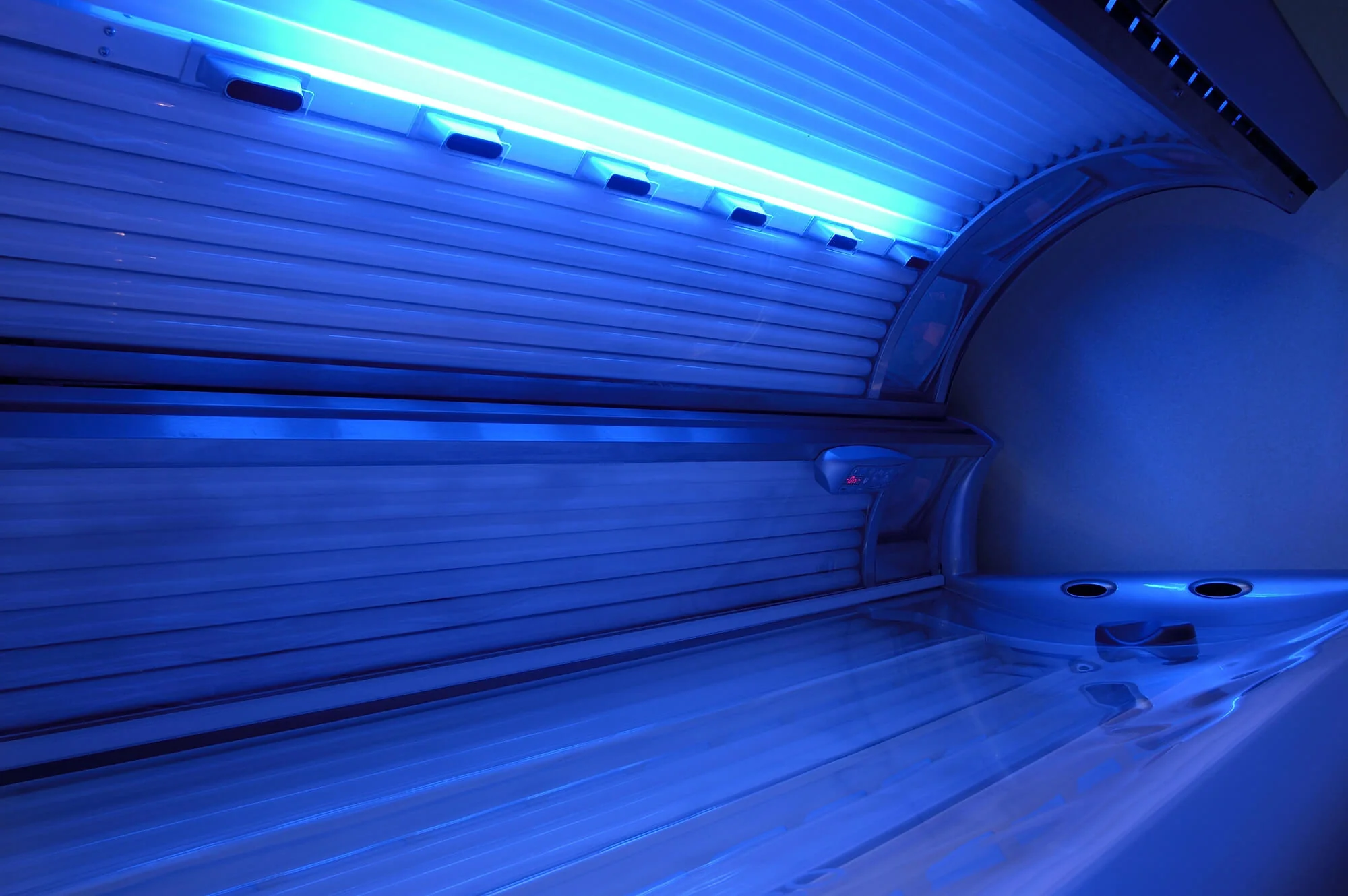
Tanning Beds and What You’re Really Exposing Your Skin To
Tanning beds have long appealed to those seeking instant color and convenience. Many believe it’s efficient or satisfying to just lie in a cocoon of UV light and walk out with a tan after a few sessions. They also used to be widely accessible at gyms or salons.
Here are some of the most common reasons the allure of tanning beds remains alive:
- Quick Color Development: Results are visible after just one or two sessions.
- Widespread Availability: Found in many salons, gyms, and wellness centers.
- Year-Round Access: Provides a tanning option regardless of season or climate.
- Longer-Lasting Tan: UV exposure stimulates melanin production for a deeper and sustained color.
- Potential Mood Lift: Some claim it helps with Seasonal Affective Disorder (SAD) by mimicking the effects of natural sunlight, although that is not backed by research.
- Perception of Natural Results: Some users feel UV tanning offers a glow that better mimics natural sun exposure.
However, while these perceived advantages might exist, they come with very real—and often understated—risks and potential dangers.
How Tanning Beds Actually Work
Tanning beds emit concentrated UV rays, primarily UVA rays and sometimes UVB rays, which penetrates the skin’s outer layer and stimulates melanin production. This process darkens skin cells, creating that bronzed glow. However, it also causes direct exposure to artificial UV radiation, accelerating skin cell damage and, in many cases, leading to irreversible effects over time.
This form of controlled exposure, often marketed as “safe,” is anything but. Studies show that regular tanning in UV beds is directly correlated with increased risk of skin cancer, including melanoma. In fact, some data equate the danger of tanning beds to that of tobacco use when it comes to cancer development.
Major Disadvantages
- Risk of skin cancer: One of the most well-documented consequences of indoor tanning is its link to the development of skin cancer, particularly melanoma and basal cell carcinoma. The World Health Organization classifies tanning beds as carcinogenic.
- Premature aging: UV radiation breaks down collagen and elastin in the skin, leading to wrinkles, dark spots, and a loss of firmness. This accelerates the aging process and makes the skin appear dull over time.
- Uneven pigmentation: For those with skin sensitivity, preexisting conditions, or darker skin tones, tanning beds can cause patchy coloration, irritation, and worsen hyperpigmentation, especially on areas with dead skin cells or scarring.
Is It Right for Your Skin Type?
People with fair skin, sensitive skin, or a history of skin conditions are especially vulnerable to the downsides of tanning beds. Even with short, controlled sessions, the skin may burn rather than tan, increasing the risk of age spots and creating uneven tone.
Additionally, those taking certain medications or undergoing medical treatment may find that their skin becomes even more reactive under UV light.
In the above cases, tanning consultants typically advise against indoor tanning methods altogether, pointing instead toward safer alternatives like professional spray tanning, which is a method that delivers the glow without the biological harm.
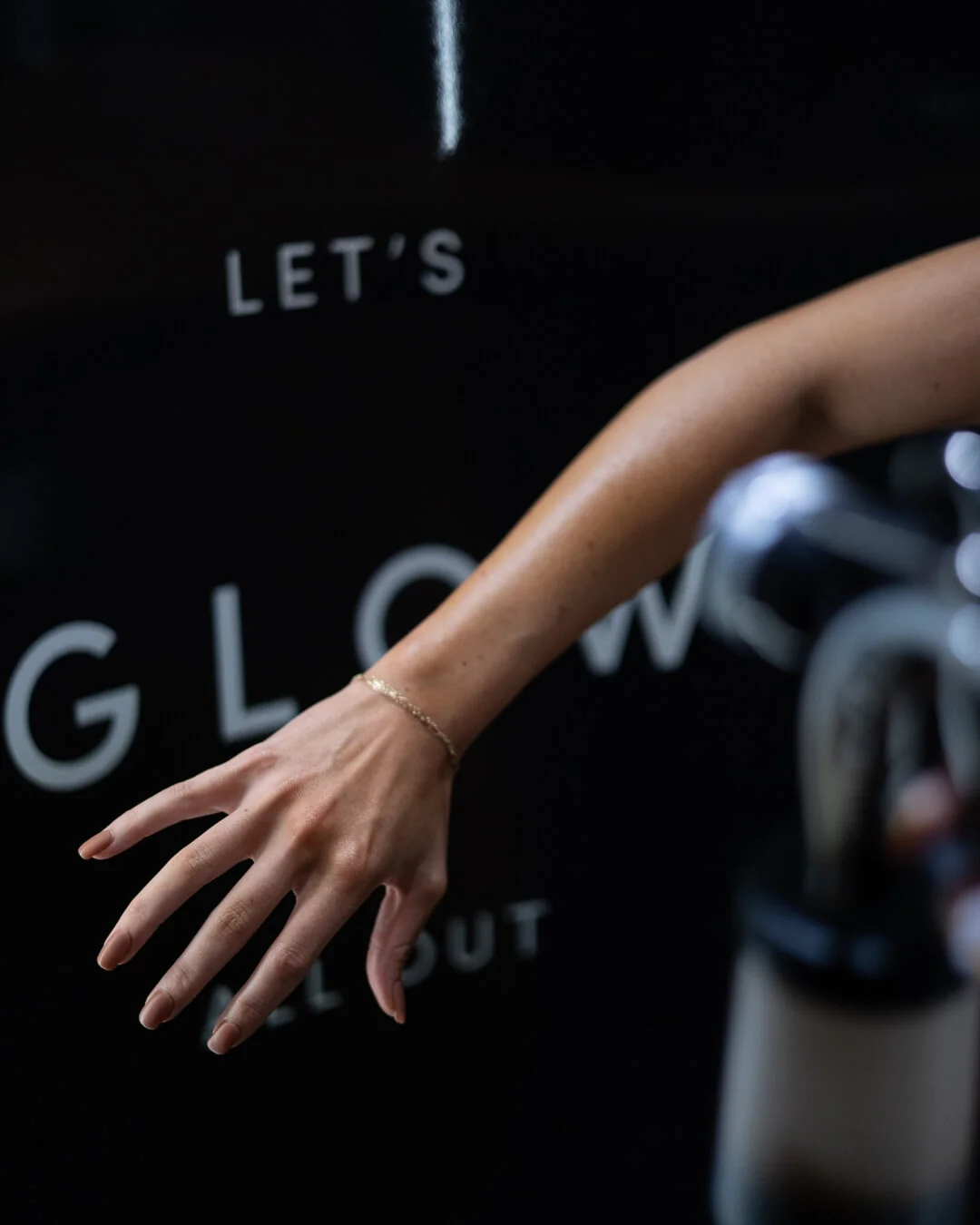
What Is Spray Tanning and How Does It Work?
When debating sunless tans vs. tanning beds, a common question from potential users is: what exactly are they being sprayed with that makes their skin glow? And it’s an understandable one.
Here are the basic facts about sunless tanning.
The Active Ingredients
Spray tanning, often referred to as sunless tanning, works through a safe chemical reaction between your skin’s outer layer and an active ingredient called DHA (dihydroxyacetone). Derived from plant sources like sugar beets or cane, DHA interacts with the amino acids in dead skin cells to create a temporary browning effect, resulting in a healthy glow that mimics natural sun exposure, without the UV damage.
This reaction is entirely surface-level and does not penetrate the deeper layers of skin, making it a significantly safer alternative to UV tanning. The glow you get is not from melanin production, but from a customized sunless tanning formula applied through a fine mist by a trained technician or via a commercial spray tanning booth.
How Color Develops Without UV Exposure
Once applied, DHA begins developing color over a span of several hours. Depending on the tanning solution and your skin type, you may rinse off the guide color after as little as 2–4 hours, with full results appearing at the 24-hour mark.
Because spray tanning does not rely on UV exposure, it eliminates the risks of direct exposure to UV radiation, including skin cancer, premature aging, and inflammation. Additionally, the development process is not dependent on natural sunlight or artificial UV light, giving clients complete control over when and how their color develops.
Personalized for Your Skin
Modern sunless tanning isn’t one-size-fits-all. At high-end tanning salons like goGLOW, clients benefit from proprietary color-matching technology and formulas tailored to their unique skin tone and skin type. Whether you have fair skin with high sensitivity or a deep skin tone seeking extra luminosity, a professional spray tanning session ensures the color is even, flattering, and natural-looking.
Customized blends also help address specific concerns, from dry patches to hyperpigmentation, offering both color enhancement and skin-nourishing ingredients that support long-term skin health.
As more consumers reject the dangers of tanning beds, sunless tanning emerges as the safe alternative that combines science, aesthetics, and skin wellness.
Spray Tan vs. Tanning Bed: A Side-by-Side Comparison
When it comes to achieving that sun-kissed glow, many people weigh the options between spray tans and tanning beds. While both methods can enhance your skin tone, they differ significantly in terms of safety, effectiveness, and skin health. Let’s dive into a side-by-side comparison to help you decide which option is best for your bronzing needs.
Safety
When it comes to the safety of your skin, there is no contest.
- Sunless: Radiation-free tanning method that uses FDA-approved ingredients to create color on the outer layer of the skin.
- Beds: Tanning beds, in contrast, expose the skin to concentrated UV radiation, increasing the risk of DNA mutations and the development of skin cancer over time. UV tanning can cause inflammation, skin sensitivity, and permanent pigmentation issues, especially for those with fair skin or preexisting skin conditions.
Spray tanning eliminates these dangers while offering the same instant glow and aesthetic appeal.
Precision
With professional spray tanning, every detail is accounted for.
- Sunless: Technicians tailor the tanning solution to your unique skin tone, ensuring a balanced, streak-free application from head to toe. At salons like goGLOW, custom sunless tanning solutions are created to work with your skin’s natural undertones, correcting common tanning myths like “one color fits all.”
- Beds: In contrast, tanning beds provide broad, uncontrolled UV exposure, which can result in patchiness, over-darkening in certain areas, and inconsistent color, especially around joints or drier skin zones.
Longevity and Maintenance
- Sunless: A spray tan typically lasts 5 to 10 days, depending on your skin type, daily activities, and post-tan care. With proper hydration, exfoliation, and follow-up using sunless tanning products like moisturizers or gradual tanners, the glow remains even and fades naturally.
- Beds: While tanning beds may produce color that appears to last longer due to deeper melanin production, they also accelerate skin turnover, which leads to long-term skin damage, dryness, and discoloration, often requiring more frequent sessions and restorative treatments.
Cost and Value
- Beds: Initial costs for both tanning beds and spray tanning may seem comparable. However, over time, the cost of aftercare products, skin-repair treatments, and increased frequency of bed sessions due to fading or skin damage can add up quickly.
- Sunless: Spray tanning, especially when done by trained professionals, offers more value per session through predictable results, reduced long-term skin risks, and lower maintenance requirements. You invest not just in color, but in the preservation of skin health and appearance.
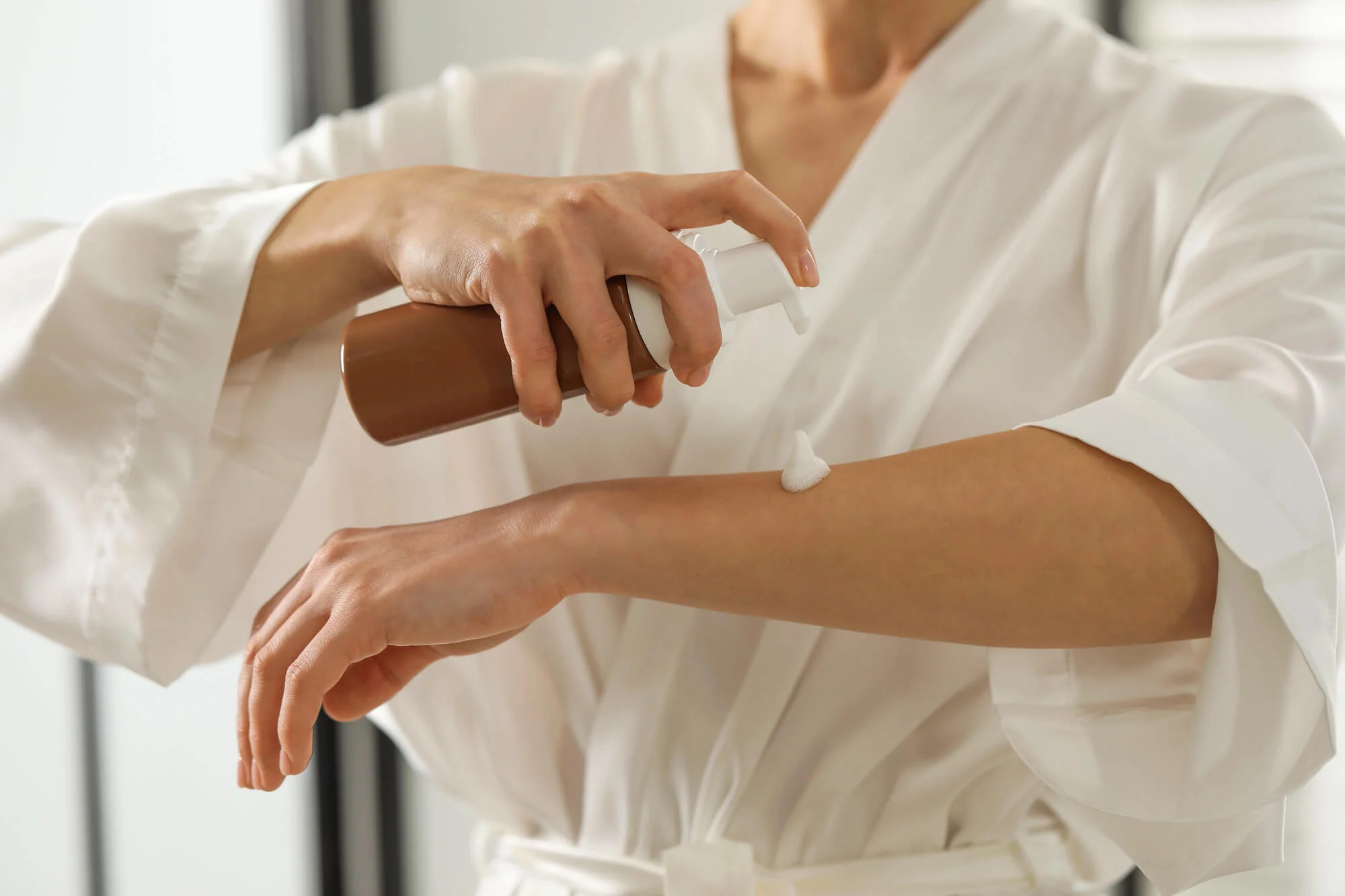
Why Sunless Tanning Is the Safer Alternative
From busy professionals to skincare enthusiasts, there are plenty of good reasons more people are making the switch to spray tans over tanning beds; as a better approach when it comes to a fake tan..
- No Radiation and Risk of DNA Damage: One of the most important benefits of spray tanning is what it doesn’t do: it doesn’t expose your skin to the rays from tanning beds full of UV radiation. Instead of triggering melanin production deep within the skin, sunless tanning products like DHA react with the dead layer of skin cells to develop color. This avoids any risk to DNA, collagen, or your long-term skin integrity.
- Custom, Paraben-Free, and Vegan: With sunless tanning, you have full control over what’s going on your skin. At goGLOW, every tanning solution is part of a custom formulation that is paraben-free and vegan, infused with skin-nourishing ingredients that promote hydration, balance, and luminosity.
These solutions and products are safe for people with sensitive skin, and can be tailored to your specific skin type, from dry to oily to acne-prone, ensuring you never have to compromise safety for beauty.
A Better Option for Skin Health and Natural Beauty
Spray tanning is not just about getting color; it’s about enhancing your natural skin tone without compromising skin health. With no UV tanning bed commitment, no recovery time, and no long-term risks, you’re able to enjoy a beautiful all-over glow that supports your appearance and your well-being.
When Sunless Tanning Is Especially Recommended
Tanning sprays become the clearer and definitive choice over tanning beds even more for the following people:
- Those with Sunspots or Uneven Pigmentation: If you face uneven skin tones, sunspots, or hyperpigmentation, sunless tanning is ideal. Tanning beds can worsen these by increasing melanin in pigmented areas, leading to blotchy results. Spray tans offer even coverage, a consistent glow, and reduce visual skin imperfections.
- Sensitive or Burn-Prone Skin: Those with fair, sensitive skin or a history of reactions face higher risks with tanning beds. UV exposure from getting either a natural tan or sunbed tan can cause burns and long-term damage. Sunless tanning poses no such risks, making it perfect for sensitive skin, ensuring a safe and pleasant experience.
- Those Looking for a Controlled, Natural Glow: Preparing for an event or desiring a year-round glow, spray tanning gives you control over your color depth and tone, providing a polished, natural look. It’s a convenient choice for busy individuals who want a beautiful tan without the health risks of regular tanning.
Why goGLOW Leads in Custom Sunless Tanning
When it comes to achieving a sun-kissed glow without compromising your skin’s health, spray tans are a top choice for many. goGLOW stands out in the world of sunless tanning by offering personalized and skin-friendly solutions that cater to individual needs and preferences.
Here’s why goGLOW is a leader in custom sunless tanning:
- Proprietary color matching technology for seamless results
- Custom formulations that are paraben-free and vegan
- Elevated, premium salon experience with expert guidance
- Long-lasting, streak-free finishes that smell good and look flawless
Whether you have fair, olive, or deep skin, our expert tanning consultants tailor each application for seamless integration and a smooth, even result across your entire body.
goGLOW isn’t just a tanning salon: it’s an experience and a retreat. Each session is guided by expert technicians trained in advanced tanning technology and professional spray application techniques.
The result? A streak-free finish that smells good, feels amazing, and lasts through your most important moments, from weddings to red carpets to everyday confidence.
The Smarter Glow Starts with Sunless
The choice between a sunless tan and a tanning bed isn’t just about color—it’s about care, control, and long-term skin health. While a tanning bed may offer quick results, the risks of UV exposure, skin damage, and certain health complications make it a less-than-ideal option for today’s skin-conscious people.
Sunless tanning, especially when applied by professionals using high-quality, custom solutions, delivers everything you want from a glow: safety, personalization, precision, and a radiant finish that enhances your natural beauty without compromise. This method is not only safer—it’s remarkably effective, offering several distinct advantages over traditional tanning.
Whether you’re preparing for a big occasion or building sunless tanning into your whole beauty routine, the safer alternative is clear. When you weigh the pros and cons, sunless tanning emerges as the smarter, more thoughtful choice. It does more than just add color—it helps refresh your skin, your appearance, and your overall confidence.
So if you’re considering a spray tan, don’t gamble with your skin. Choose glow without the gamble. Choose expert care over artificial UV radiation.
Choose goGLOW for pretty color, lasting confidence, and radiant skin you can feel good about.
